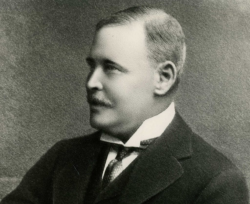Charles Rothschild

- Born
- 9 May 1877
- Died
- 12 October 1923 (age 46)
Charles Rothschild was a man ahead of his time. He was born into the Rothschild dynasty and worked for the family bank. However, he was also a keen entomologist and passionate about natural history, and is credited with setting up the first nature reserve.
Rothschild was an expert on fleas and built up collections of butterflies and moths. During the course of collecting these specimens, he became convinced about the need to protect habitats in order to protect the animals. Focussing on habitats rather individual species was a new approach, reflecting the growing belief that sites had to be protected from development or damage.
He bought Wicken Fen near Ely in Cambridgeshire in 1899 at the age of 22, which he gave to the National Trust. In 1910 he bought Woodwalton Fen near Hungtingdon. On this land built what became known as Rothschild’s Bungalow, which he used as a base for his insect collecting expeditions.
The most inspirational environmentalist of his day
His concern about the loss of wildlife habitats led to him calling a meeting of his friends and colleagues in 1912, where the Society for the Promotion of Nature Reserves (SPNR) was established. This has since evolved into The Wildlife Trusts, which is now a network of 47 individual trusts across Britain.
Rothschild argued that conservation policy had to be based on surveys and research. He also saw Britain as part of the international conservation scene and recognised the need to attract the support of influential individuals of the time, and to promote his ideas to a wider public.
From 1912 until 1915, he set out to identify sites across Britain that were important to conservation, with the aim that these sites would become nature reserves. Data were collected by sending out questionnaires to members of the SPNR and to local natural history groups. Members of the public also contributed their proposals after seeing articles in newspapers.
This was an ordered and reasoned approach to identifying nature reserves and the first national survey of wildlife sites, covering England, Scotland, Wales and Ireland. The survey identified 284 sites that were breeding places for rare animals, locations for rare plants or areas of geological interest. These became known as ‘Rothschild’s Reserves’.
Many of the sites originally identified have been completely or partially lost, but all of those that remain are now Sites of Special Scientific Interest (SSSIs) and/or designated nature reserves, some of the most important wildlife and geological sites today.



